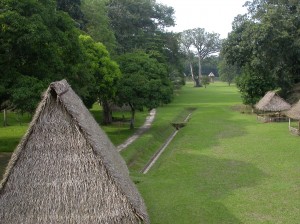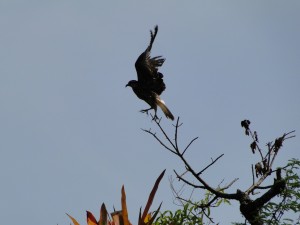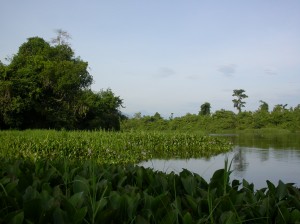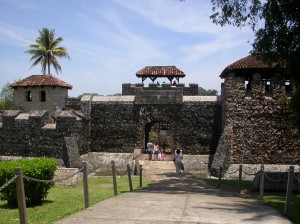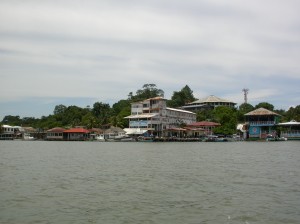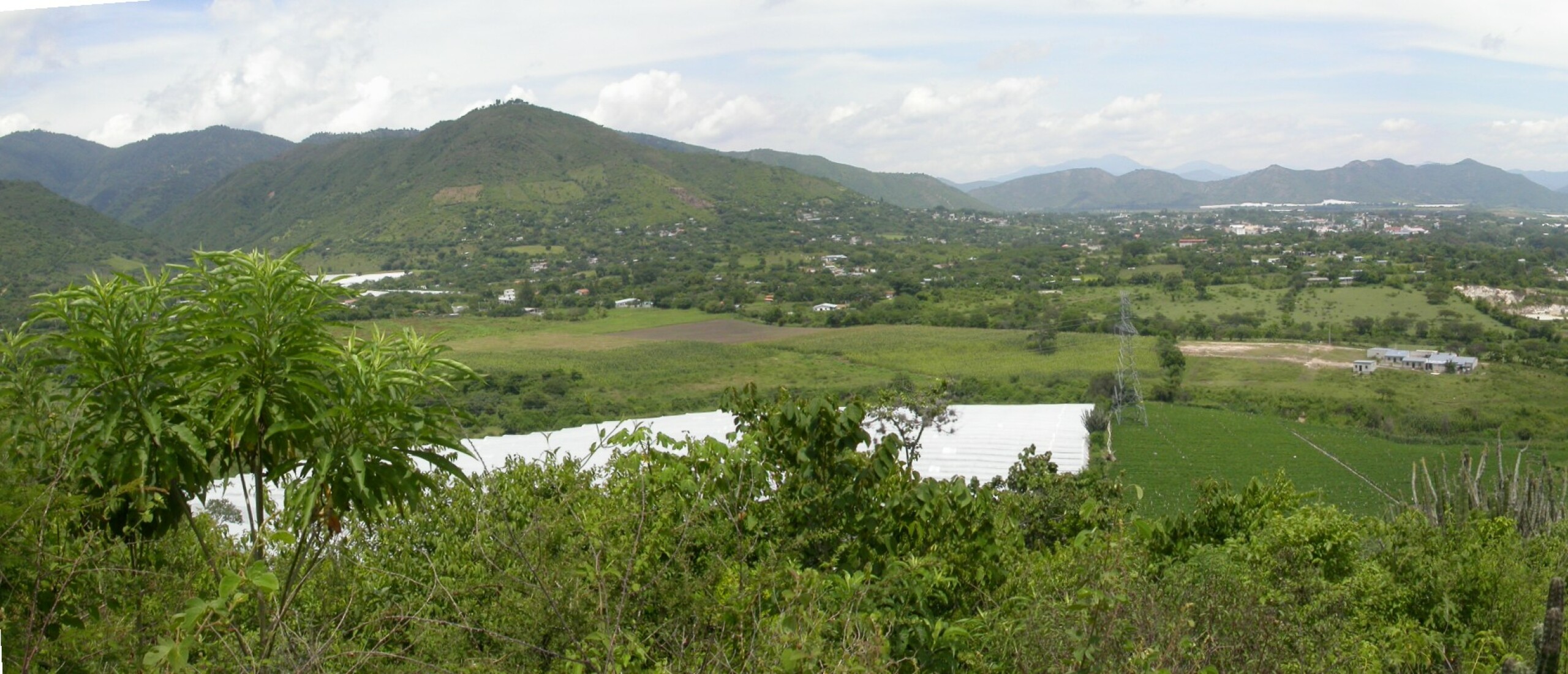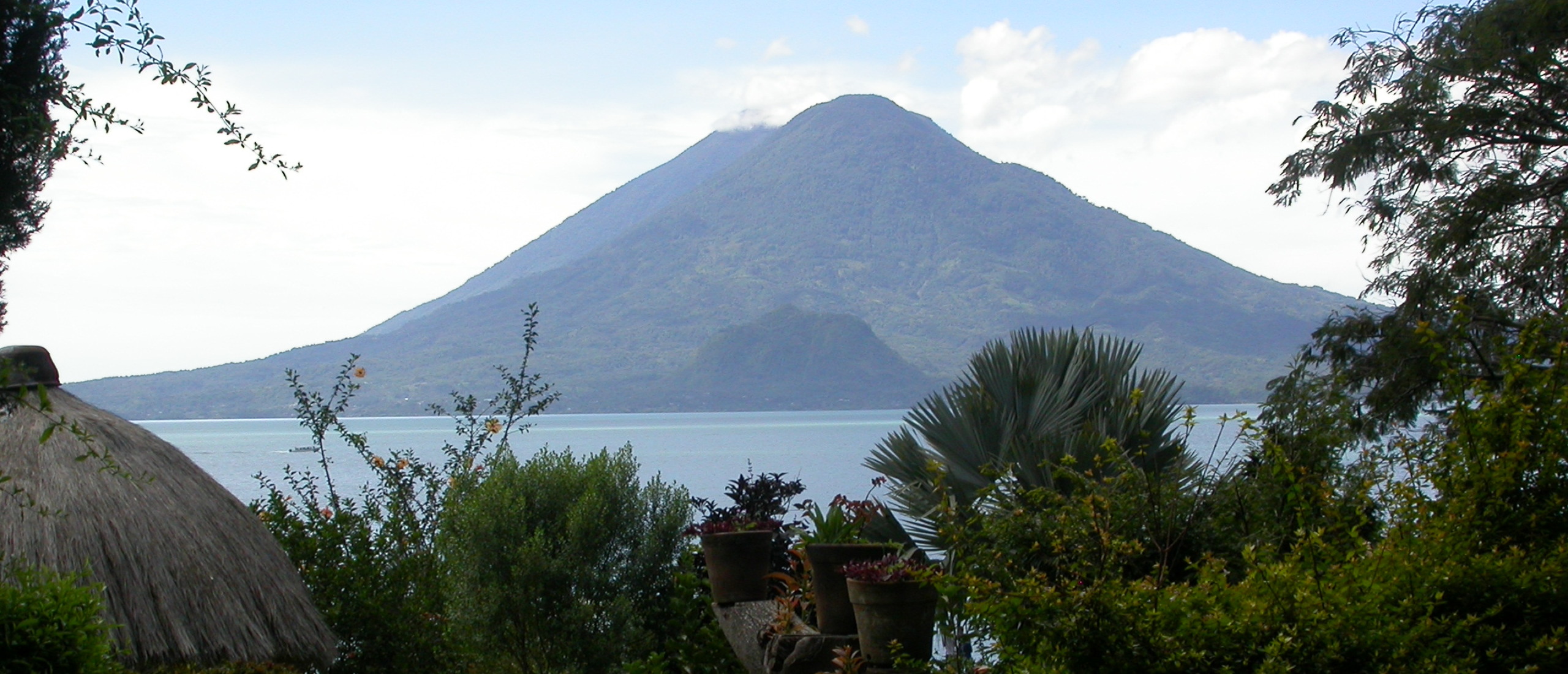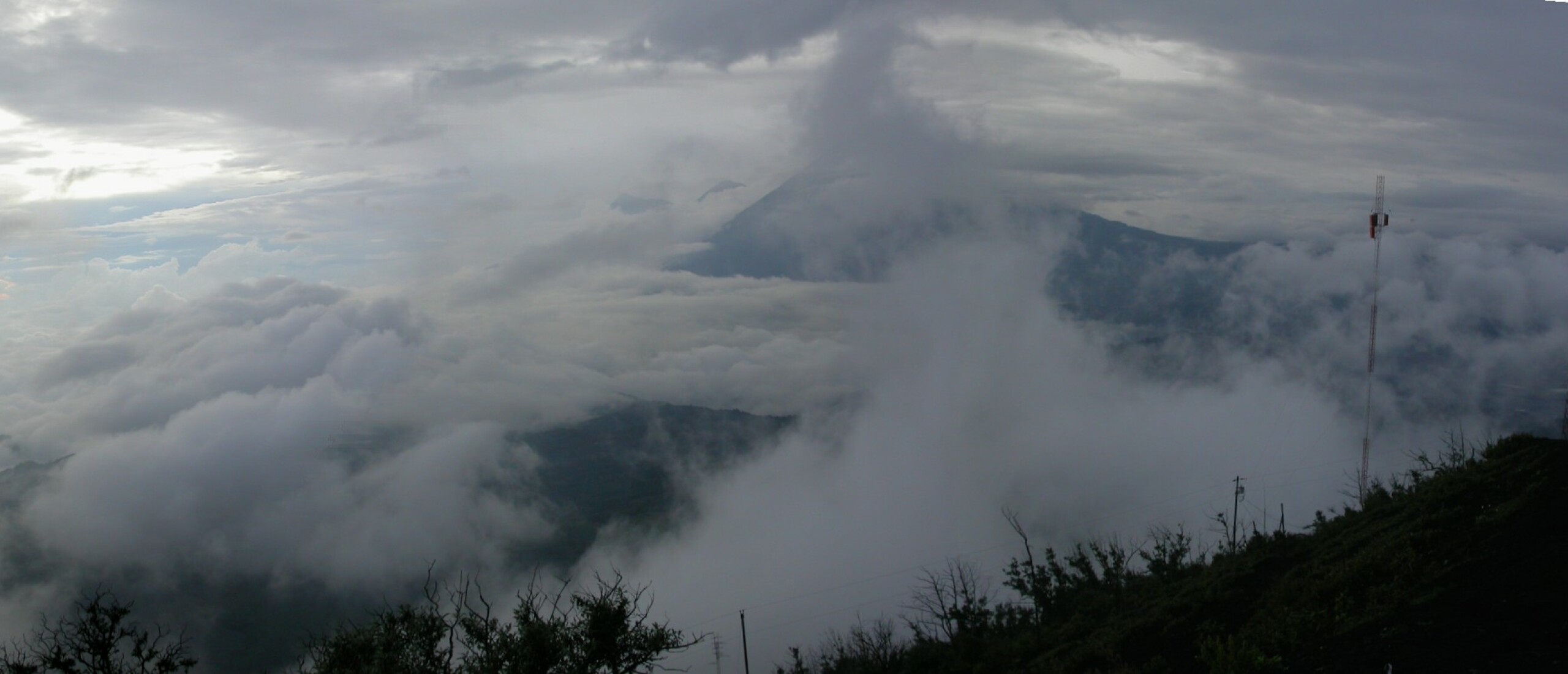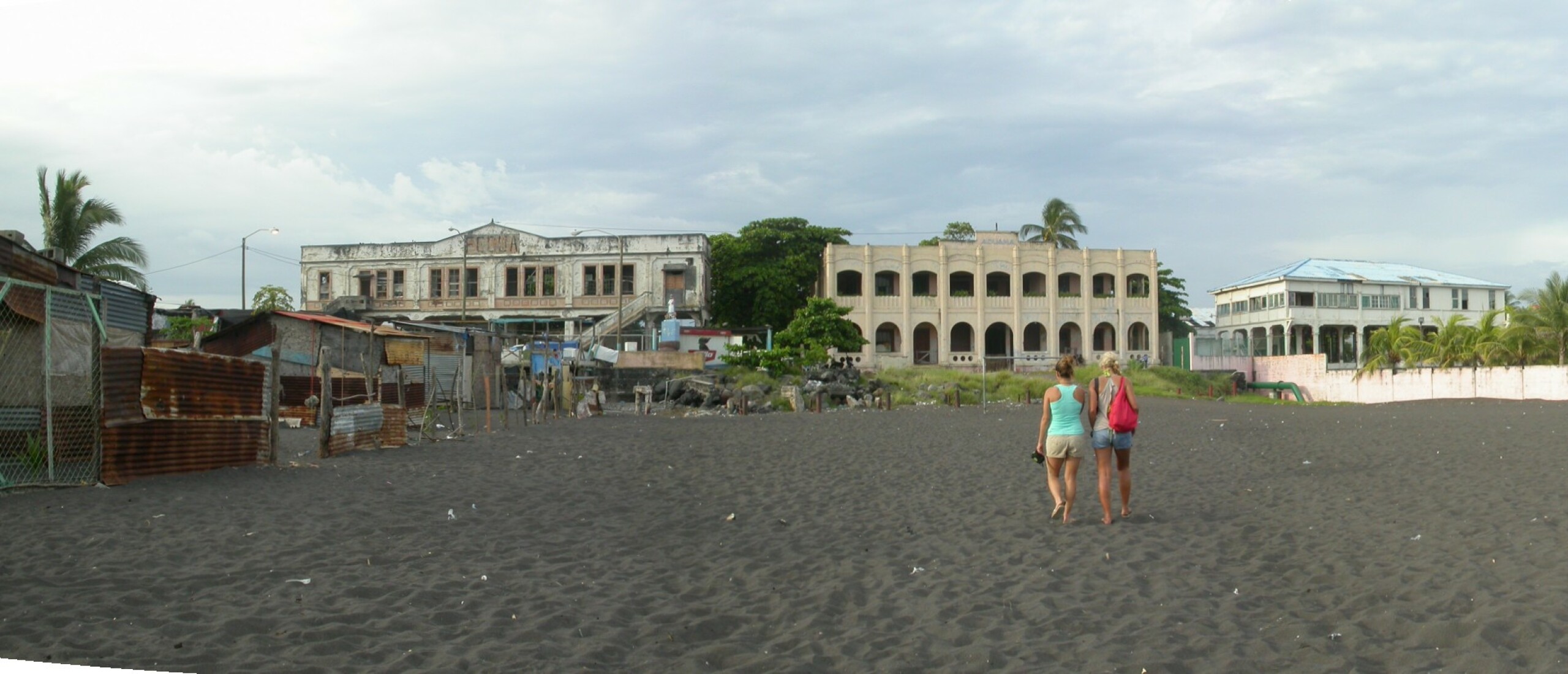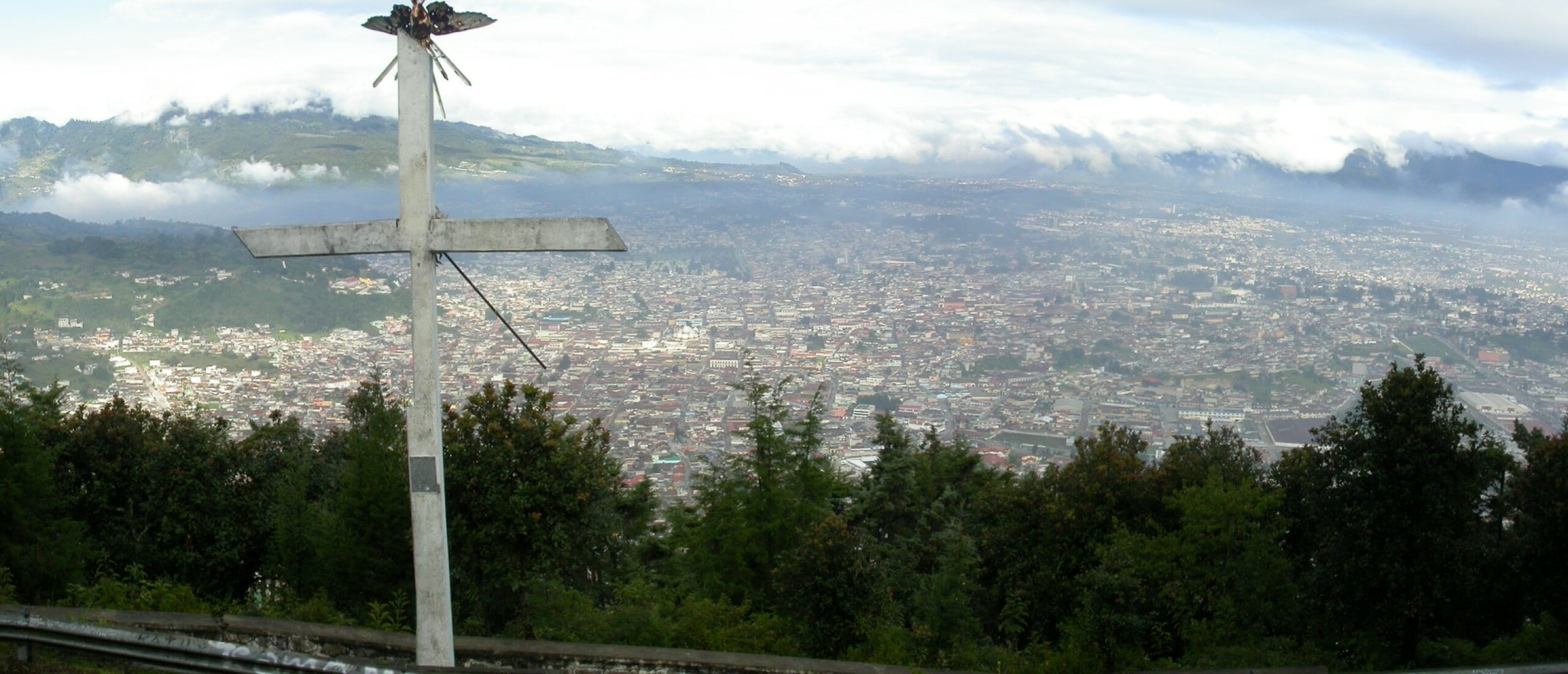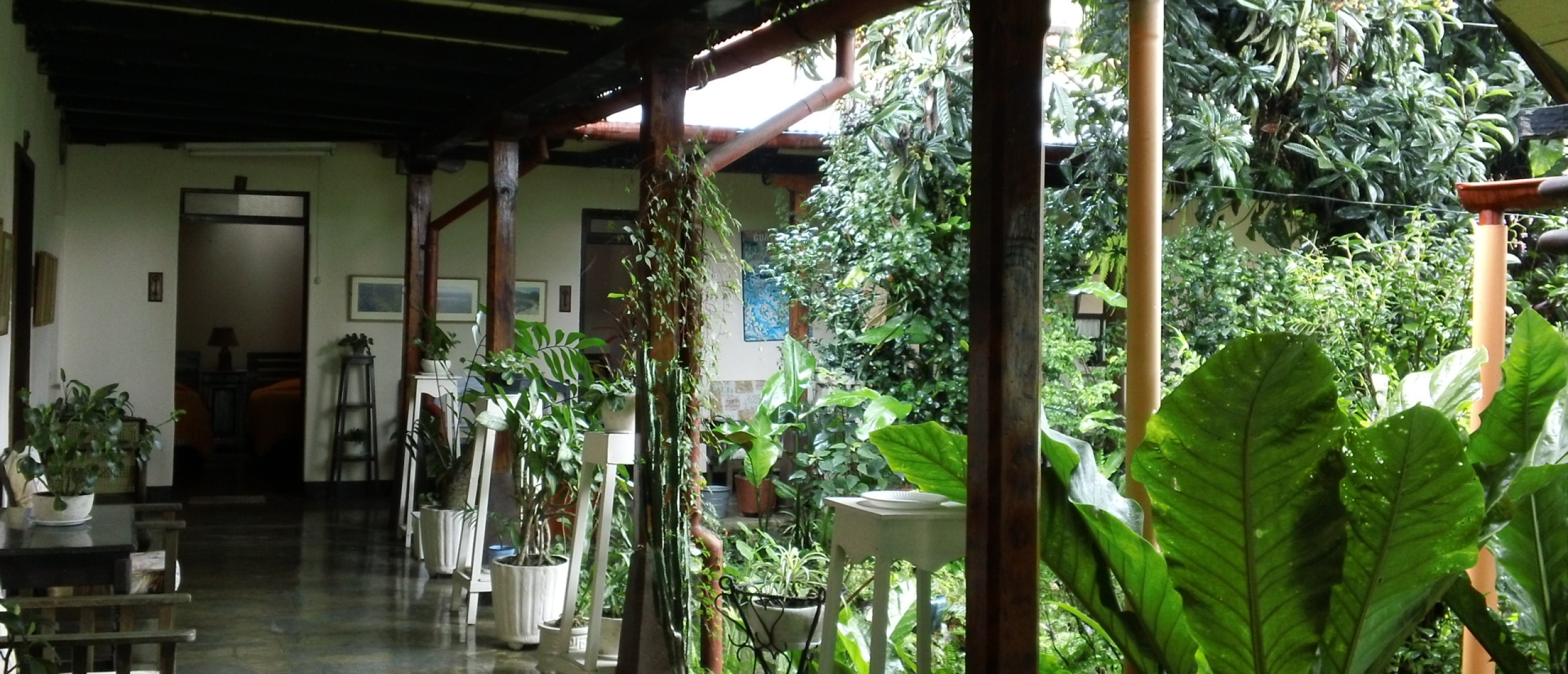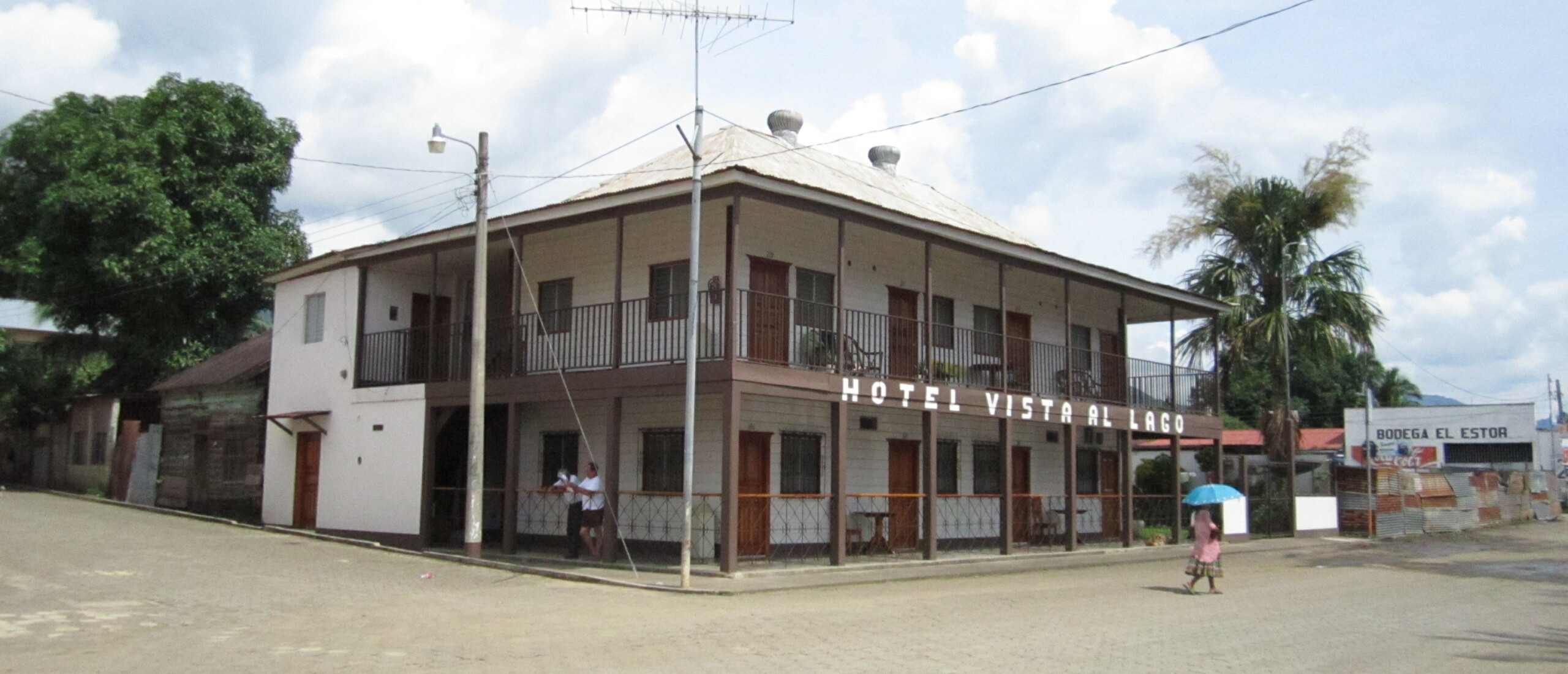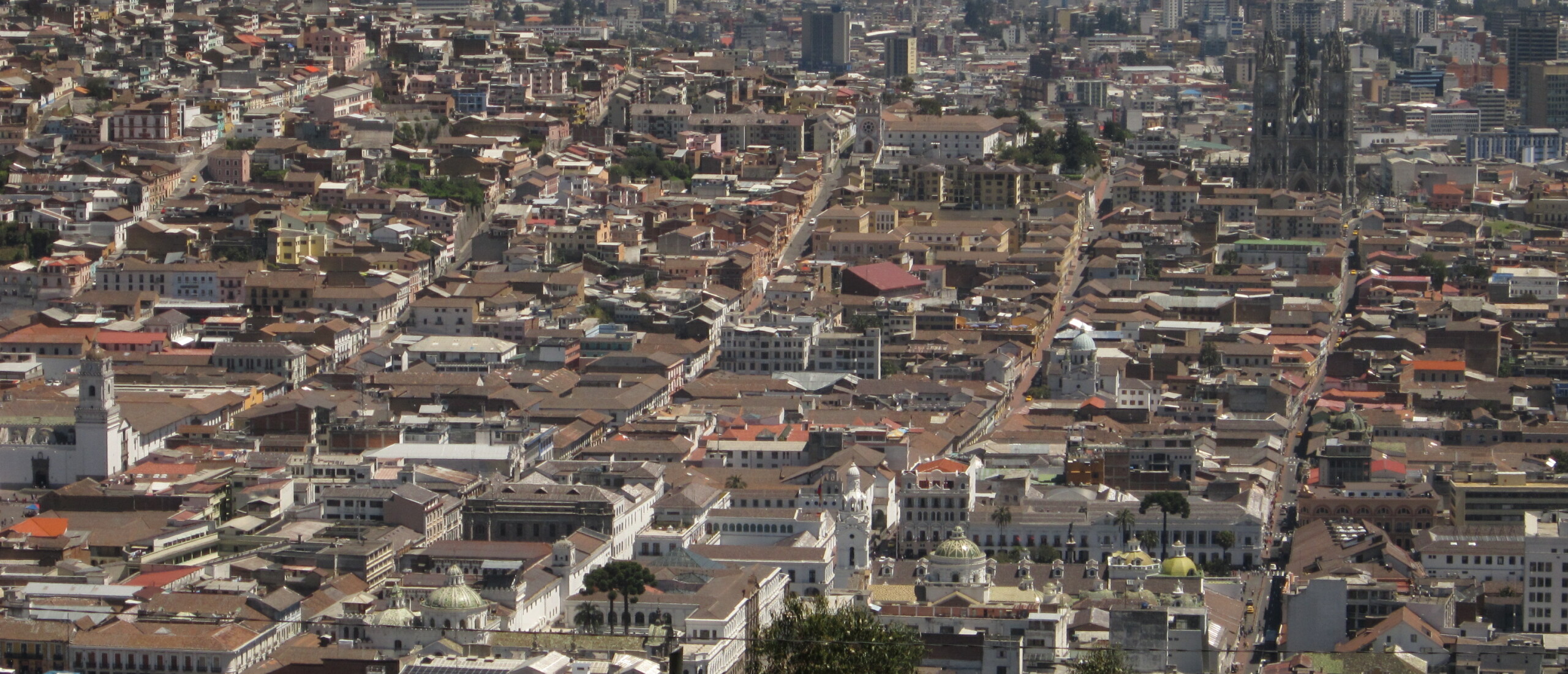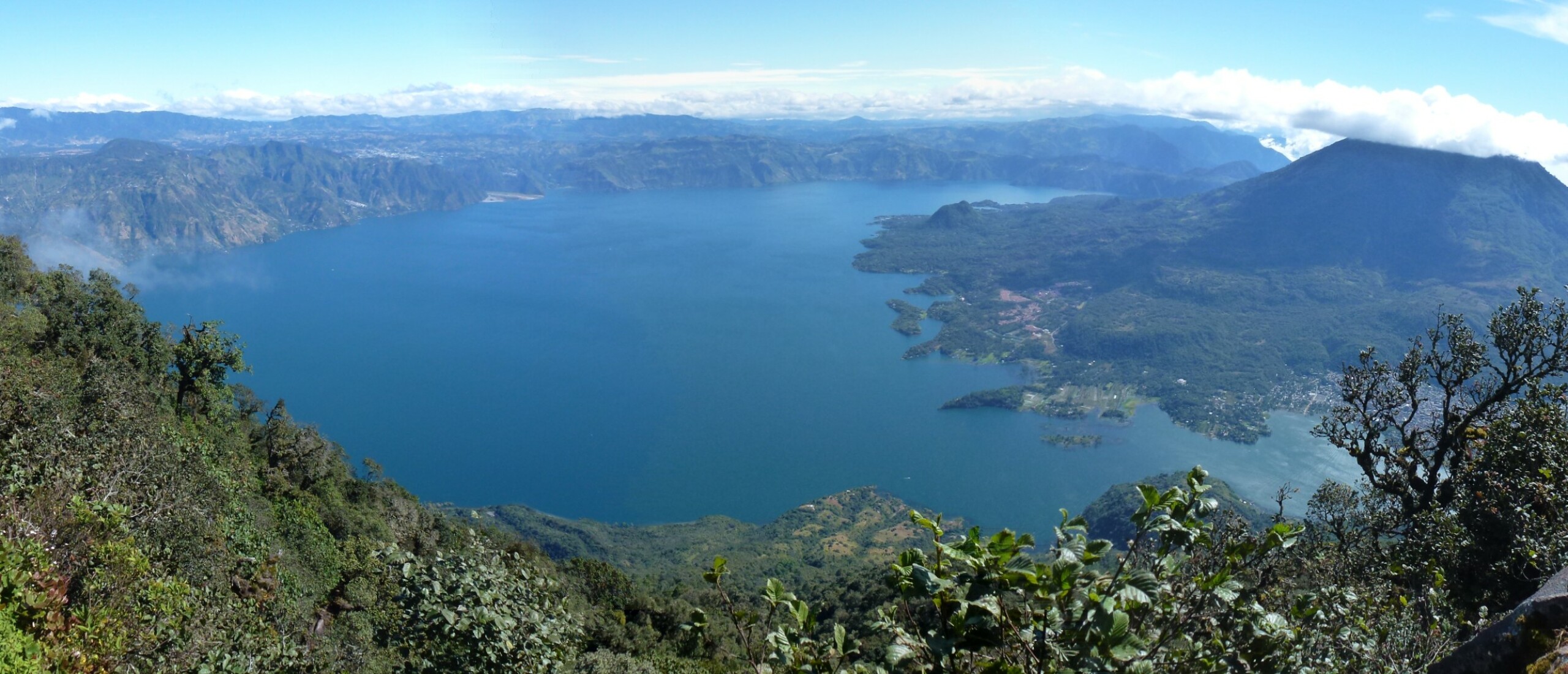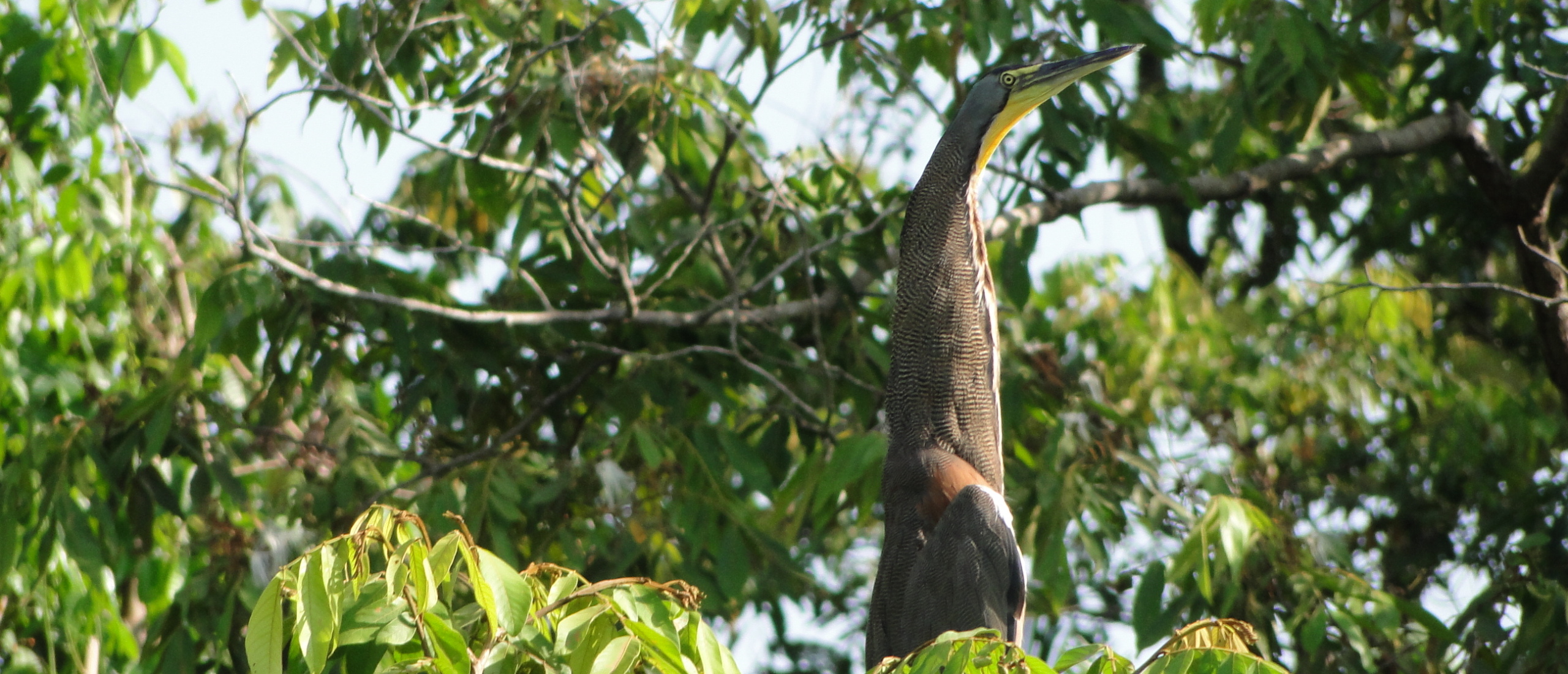
Lago de Izabal, Rio Dulce and the Atlantic coast Following on from the last entry, describing our day with the Japanese insect specialist in Salamá, we were picked up the following morning by Juliana Skaggs (Julie), an intrepid friend of Brenda’s (everyone is a friend of everyone else here in “Guate”!) in a large Mitsubishi 4-wheel drive vehicle, and it was not long before we were speeding (literally!) along the road towards the Caribbean (Atlantic) side of Guatemala. I had hoped to follow my great grandfather’s route more precisely by going down the less used road through the Polochic valley, but as several bridges had apparently been washed out, we were forced to take the main road back as far as the road junction at El Rancho, where the road from San Jerónimo joins the Carretera del Atlántico, and from there we shot down towards the steamy tropical lowlands, stopping briefly at San Cristóbal Acasaguastlán to view a beautiful church.
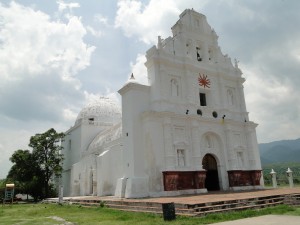 Church at San Cristóbal Acasaguastlán by Juliana Skaggs
Church at San Cristóbal Acasaguastlán by Juliana Skaggs
Our next stop was at the magnificent ruins of Quiriguá, set in a beautifully laid out patch of parkland and natural forest surrounded by the seemingly endless banana plantations laid out by the United Fruit Company. It was like walking in a sauna here, but we took time to admire some of the stelae, gigantic carved brown sandstone monoliths dating from the 8th century AD. There was sadly some more modern graffiti on some of the structures…and one particular year was clearly legible: 1881. Oh dear, I thought, surely great grandfather George Charles Champion could not have been responsible for such vandalism. Luckily, although he was in Guatemala in precisely that year, we know for sure that the closest he came to this site was the western end of the nearby Lago de Izabal, so it was not him!
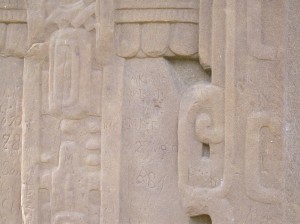 The graffiti showing the year 1881, not written by George Champion!
The graffiti showing the year 1881, not written by George Champion!
From here we headed on towards the coast, but then turned north, crossing over the river at the bustling, chaotic town of Rio Dulce, where we turned off this road, and headed round the eastern end of the great lake of Izabal and powered our way along the northern shore road, before finally reaching our destination, the lakeside town of El Estor. It was not long before we had checked to our “ecological cabins”, and had waded out into the deliciously warm waters of the lake. Here we wallowed like manatees as the tropical night fell, watching the splendid natural firework display of lightning flashes in the distance in all directions, with bats flitting around our heads. The following day was one of the highlights of my time in Guatemala so far. Our boatman arrived early to spirit us across the lake in the dawn towards the great forested delta area of the Bocas del Polochic. George came this way in a canoe on his travels in 1879, and although we did not head directly up the river towards Panzós as he did, we explored the winding side channels through the flooded forest, venturing into the Rio Oscuro and various other channels, admiring the abundant birdlife that uses this refugio, including several Bare-faced Tiger-Herons, Limpkins, Snail Kites and Laughing Falcons, as well as several enormous shimmering blue Morpho helenor butterflies.
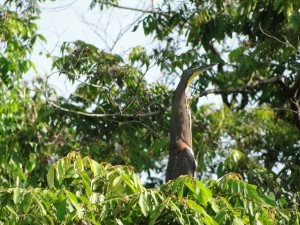 Bare-throated Tiger-Heron by Juliana Skaggs
Bare-throated Tiger-Heron by Juliana Skaggs
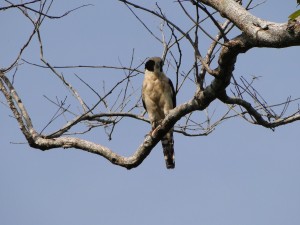 Laughing Falcon by Juliana Skaggs
Laughing Falcon by Juliana Skaggs
We stopped at the biological research centre of Selempim, where we had originally thought of spending the night….but somehow the comparative comfort of our ecological cabins back at El Estor seemed more attractive, and Julie proved to be highly adept at butterfly and even dragonfly-catching, an activity she had never tried before!
 Rio Oscuro, Bocas del Polochic
Rio Oscuro, Bocas del Polochic
We then retraced our tracks (or perhaps better stated, our wake) back out into the open water, where we were treated to quite reasonable views of two manatees, one of which actually rose out of the water before splashing back in. I do hope that boatmen will not molest these shy and peaceful mammals too much in the future, as this area is one of the few potentially undisturbed breeding areas they have. Despite the ubiquitous floating plastic bottles and other man-made detritus that plague every stretch of water, the lake seems relatively clean, although the presence of a large nickel mine west of El Estor, and a filthy palm oil processing plant that was belching dirty brown smoke, could prove problematic in terms of pollution here in the coming years. After watching the manatees for some considerable time, we sped back across the lake, during which time I noticed an interesting entomological phenomenon: crossing the lake was an almost constant stream of the large Brimstone-like Yellow Angled Sulphur butterfly, Anteos maerula, all heading southwards. Whilst some butterflies that spend the summer months in North America, such as the famous Monarch, migrate south for the northern winter, it seems strange that a tropical species that spends its entire life in warm climes should need to move further south, but I observed this phenomenon not only on this day, but also on the following two days further east; vast numbers of these showy butterflies were on the move, all heading southwards. Once we had reached our cabins and taken a short break, we headed out by car for the short drive to the waterfalls of Boquerón, where we again boarded a boat for a short journey into a deep and mysterious canyon, with vast, forested limestone cliffs towering above us. We then headed to the nearby Finca El Paraiso, where we again plunged into the lake to cool off (hardly possible in these tepid waters) and to admire the lightning show once again. The following morning we headed back to the north side of the road opposite El Paraiso, where we hiked the short distance up a forest track to a most amazing hot spring waterfall that drops about 12 metres into a deep pool in the river, allowing one to stand in cool water while taking a natural hot shower, or even to duck under an overhang into a tiny, narrow grotto complete with mini stalactites. From here we moved on to the beautifully restored Castillo de San Felipe, dating from 1652, set at the strategically important mouth of the Rio Dulce, leading into the eastern end of the Lago de Izabal. The castle was captured and re-captured several times, as well as serving as a prison, and I was surprised to see some British cannon dating from the reign of George 1st.
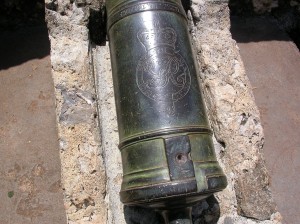 Detail of a cannon at San Felipe
Detail of a cannon at San Felipe
We abandoned our land transport here at Rio Dulce town, and boarded our launch for a really magical journey down the river, through the great lagoon of El Golfete, and into the breathtaking chasm that the river winds its way through, before finally reaching the open Caribbean Sea at the town of Livingston, headquarters of the Garífuna community in Guatemala, who trace their roots back to the Caribbean island of St Vincent, where shipwrecked African slaves mixed with the local Carib Indians before being deported to the Honduran coast by the British in 1796, from where they have spread along the coasts of Honduras itself, southwards into Nicaragua and northwards into Guatemala and Belize. Our boat took us past the town of Lívingston itself, which cannot be reached by land and is only accessible by boat, a few kilometres further along the Atlantic shore to our delightfully located hotel and cabins, the Hotel Salvador Gaviota, where we had a wonderful dinner with a candidate for the post of mayor of Lívingston, Magno, his wife Lucy and their two children Ugundany and Nanigi. I mentioned to Magno that George had had an assistant who must have come from the Garífuna community named Leopoldo, who even accompanied him on his two-year stint in Panama as well, and he immediately mentioned that he personally knew of a couple of Leopoldos in Lívingston….as Leopoldo is an unusual Christian name, it could indeed be that the descendants of my great grandfather’s much trusted assistant are now living here. How interesting it would be for the great grandson of GCC to meet the great (or even great great) grandchildren of GCC, 140 years later! Further investigation will be carried out!
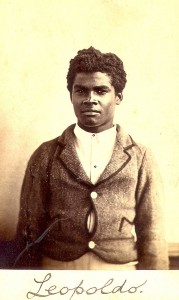 Leopoldo, GCC's assistant in both Guatemala and Panama
Leopoldo, GCC's assistant in both Guatemala and Panama
After a final wander out onto the jetty in front of the hotel to watch the nightly lightning show, this time with flashes over Belize to the North and Honduras to the South-east, we retired to bed….but not to sleep in my case, as I was viciously attacked (and am still being) by fleas, one of which I saw but did not manage to catch, and I am left covered with horrible suppurating bites which itch like fury…..perhaps George arranged for me to suffer this experience, as he himself complains of the most dreadful flea attacks in his accounts. Our destination the next morning was the series of seven pools of deliciously cool water known as Los Siete Altares, formerly the scene of some very violent assaults and robberies (including of one of Julie’s close friends), but peaceful since the locals took matters into their own hands and despatched the culprits without recourse to the law….it is better not to know too much about that. Anyhow, I savoured the cold water soothing my flea bites, but the relief was only temporary! Finally we had to drag ourselves away before returning to our hotel for a delicious taponada, the local dish containing a whole crab, fish, shellfish, banana and coconut milk, which was supposed to be breakfast but rapidly became more of a brunch. Fully replete after our feast, we reboarded our launch and returned by the same route, passing in front of the township of Lívingston, entering the wonderful canyon of the Rio Dulce, with its towering sides impressively still covered with luxuriant primary tropical forest, through the broad lagoon of El Golfete, and back to Rio Dulce town, where we reclaimed the vehicle before the long drive up to Guatemala City, where we are now enjoying the extremely kind hospitality of Julie’s parents.


